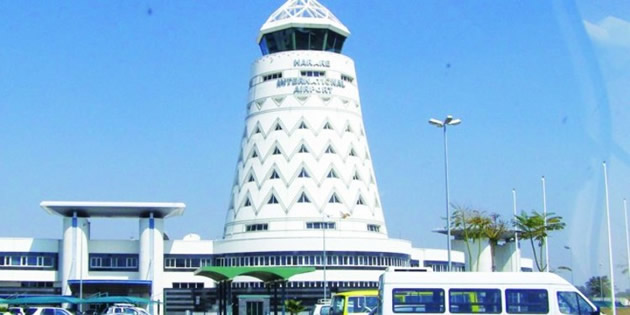Smart cities: More than sensors and buzzwords


“A lot of people think about smart cities and they think about flying cars, and stuff like that. We believe that cities won’t fundamentally look different in the next 10 years, but cities will be a lot more efficiently managed”
Jenny McGrath Correspondent
Your city is dumb. The potholed streets, coin-operated parking meters, and drafty brick buildings many of us interact with every day haven’t changed much in a century. But it’s finally happening.
From Oslo to San Diego, cities across the globe are installing technology to gather data in the hopes of saving money, becoming cleaner, reducing traffic, and improving urban life.
In Digital Trends’ Smart Cities series, we’ll examine how smart cities deal with everything from energy management, to disaster preparedness, to public safety, and what it all means for you. What is a smart city? Not even the people building them seem to know yet.
“Get 10 people in a room and ask what a smart city is, you’ll get 11 answers,” Bob Bennett, Kansas City, Missouri’s chief innovation officer, told Digital Trends. That might be true, but most involved in smart city projects agree on one thing: No one’s really there yet. “I think it’s the Wild West at this point, and smart cities mean something different to everybody,” said Jarrett Wendt, executive vice president of strategic innovations at Panasonic.
When asked for examples of smart cities (these are our four favourite smart cities, Bennett instead gave examples of smart silos: areas where certain cities are particularly thriving, though they may not tie into a bigger picture. Washington D.C. has great water analytics. Seattle is doing a lot right when it comes to environmental initiatives.
San Diego has thousands of smart streetlights. Songdo, in South Korea, had the benefit of being built from the ground up as a smart city. Many of its lessons can’t necessarily be applied to cities trying to work with existing infrastructure.
Data sharing is crucial
Better parking, efficient lighting, improved traffic flow, smarter security, improved waste management, and disaster planning are all areas where technology can make an impact. “The biggest problems with these technologies,” said Munish Khetrapal, managing director of Cisco’s smarter cities and IoT department, “there’s a lot of fragmentation . . . You need a way to connect all these different standards and bring them all in a common, unified platform.”
“You need a way to connect all these different standards and bring them all in a common, unified platform.”
Having access to the data from — for example — your environmental sensors and connected trash bins is the first step; making sense of it is the next. But sharing that data and analysis is just as crucial.
Arvind Satyam, Cisco’s managing director of smart cities and digitisation division, gives the example of waste management and traffic departments working together. If the trucks are only picking up the bins that are, say, 70 percent full and above, the traffic management agency can use its real-time information to route them in the most efficient way.
There is a reason “every city has their own challenges,” said Blake Miller of Think Big Partners, a start-up partnered with Cisco that’s working on making Kansas City smarter. Every city may have crime and congestion, but think about the weather differences between San Diego and Denver or the potential natural disasters facing Seattle and Kansas City.
Looking at neighbouring cities
Yet even if they have different problems, CIOs and mayors should still be looking at their neighbours and beyond — what Sara Gardner, Hitachi’s CTO calls “looking sideways” — to see what’s working and what’s not. In Europe, 56 cities “built their own bad variations of the same service” complained Sascha Haselmayer, CEO of Citymart, in Anthony Townsend’s book Smart Cities: Big Data, Civic Hackers, and the Quest for a New Utopia. Some cities have tried to involve citizens, promoting contests for residents to build apps.
The problem tends to be that “geeks will build apps for getting bicycle directions, they’ll build apps for finding cocktail and coffee specials, not the kinds of things that working mothers need,” Townsend told CityLab. Ignoring these populations has dire consequences.
In Columbus, Ohio’s South Linden neighbourhood, the infant mortality rate was twice that of New York City. “Without reliable transportation, it’s hard to make pre and postnatal appointments,” said Vinn White, former deputy secretary at the US Department of Transportation (USDOT), during a panel at Smart Cities Week (SCW) in Santa Clara. To win the 2015 Smart City Challenge proposal, the city suggested developing an on-demand ride service for pregnant women.
“A lot of people think about smart cities and they think about flying cars and futuristic skyscrapers and stuff like that.”
In order for cities to begin on the right track to becoming smarter, many stars need to align. The biggest factor is having leaders who are on board. Satyam cites Barcelona as a prime example; five years ago, he said, the government that was in place was not only willing to embrace technology but get different departments working together. “It’s not just about being smart in individual verticals, it’s about tying all these verticals together,” he said. When a city has a strategic goal in mind — becoming carbon neutral, like Copenhagen, for example — it requires collaboration across the board.
“Cities are big, huge moving ships that don’t move very quickly,” said Miller. Trying to rig everything together could mean that by the time everything’s in place, your brand new technology is on its way to becoming obsolete. For a city with “incredibly tight budgets,” said Bennett, there’s little room for failure.
Red tape can kill innovation
Sometimes funding isn’t the issue. “Procurement is a nightmare,” said Charles Brennan, CIO of Philadelphia, during a SCW panel. “I have less trouble getting money than I have spending it.” A start-up may want to work with a city but might struggle to fill out 30-to-40-page forms required for consideration. City ordinances that haven’t kept pace with technology can also pose a problem.
Austin, Texas was looking at installing smart kiosks around the city. According to the ordinance, “this smart kiosk is a sign,” said Ted Lehr, an IT data architect with the city. “It’s the only thing we can label it as.”
During the same SCW panel, he mentioned there might be pushback from the public with some of these initiatives. While Singapore or Dubai might unilaterally decide to implement technology, “we are doing it in a way that has to engage our public,” he said. Meanwhile, even cities with deep tech talent pools to draw from can come up short.
“It’s hard for government to compete with the private sector,” said Kevin Burns, CIO of Miami. A few panellists suggested appealing to Millennials’ civic pride and desire to make a difference to get them to accept lower-paying jobs within the government.
Building new infrastructure
In addition to outdated infrastructure, cities that aren’t starting from the ground up have inefficient buildings to incorporate into the picture. “It’s not actually the age of building, it’s the age of infrastructure,” Scott McCormick, vice president of sales and business development for BuildingIQ, told Digital Trends in 2015 at a conference about San Jose’s future. The company uses analytics to double the efficiency of HVAC systems, as long as they’re not more than 40 years old. For newer buildings, the possibilities of smart buildings go beyond energy management.
“The tenant, customer, and visitor experience is all integrated with the technology, and then all the back building facilities management is integrated as well,” Eric Simone, CEO of ClearBlade, told Digital Trends. “Every city has its own challenges.”
That means a command centre could give a building manager a picture of the HVAC system, lighting, security, and more. The heating and cooling could adjust based on the position of the sun. Visitors could have their faces scanned for security purposes, instead of having to check in at a desk. They’d get a notification on their phone, directing them to the proper elevator bank to get to their meeting. Sensors on windows, appliances, and elevators could help vendors and service people provide predictive maintenance — fixing a problem almost before it starts.
In an emergency, buildings could also communicate to provide crucial information. “The problem is for a project like this, for any big building, you’re going to have 47 different vendor platforms you now have to look at,” said Simone, who added that ClearBlade is the open, neutral platform that can tie it all together.
These smart buildings are closer than you may think. The company is working on a project that should have its smart buildings up and running in three or four years. It’s a lot easier to implement IoT on a building level than a city level, he said.
The problem of security
Another element for cities to keep in mind is security. In April, Dalla’s sirens started blaring in the middle of the night, the result of a cyber-attack. Much more disruptive and dangerous would be if control of a hydroelectric dam fell into the wrong hands, for example. Another concern is creating or worsening a digital divide, where parts of a city are left without access to the same technology — even something as simple as internet access — as the rest of the city.
Cities such as Kansas City are trying to close those gaps, but it’s not going to happen overnight. In 10 years, though cities could operate differently — but it’s not as if they’ll be unrecognisable. “It won’t look like Minority Report and it won’t look like The Fifth Element,” said Satyam. “A lot of people think about smart cities and they think about flying cars, and stuff like that. We believe that cities won’t fundamentally look different in the next 10 years, but cities will be a lot more efficiently managed.”
That definitely sounds less cool (and less Big Brother-ey) but it could look something like this: You’re driving down the road, and there’s fog ahead. If the fog is backing up traffic really badly, your car will reroute you, but if it’s just reducing visibility, your car will automatically slow down and turn on the fog lights.
Khetrapal sees a good outcome for smart cities that operate like this: “How can the city adapt and respond to the citizen, versus how the citizen adapt and respond to the city?” — Digitaltrends.com.










Comments